Benefits of STEM Education has become an important discussion to know more about the topic. It gives students the skills they need to succeed in a world that is changing quickly. The world is getting more complicated quickly, and STEM education gives students the chance to learn the technical, analytical, and critical thinking skills they need to do well in many fields. The benefits of STEM education are diverse and significant, ranging from career opportunities to increased scientific literacy and an enhanced understanding of real-world challenges. This blog post will look at the different benefits of STEM education, how it can be used in the real world, and the problems it faces as it tries to grow.
What is STEM Education?
The term STEM refers to Science, Technology, Engineering, and Mathematics, and STEM education emphasizes the integration of these subjects to provide students with comprehensive knowledge and skills.
STEM education not only prepares students for a wide range of career opportunities but also helps them develop critical thinking, problem-solving, and innovative skills that are essential for success in the modern world. Learn more about it.
Benefits of stem education
STEM education, which encompasses Science, Technology, Engineering, and Mathematics, offers numerous benefits to students. It emphasizes problem-solving, critical thinking, and innovation, providing students with the opportunity to develop practical skills through hands-on learning experiences. STEM education also supports social-emotional learning, encourages teamwork, and prepares students for success in a rapidly changing world.
Develops Critical Thinking and Problem-Solving Skills
One of the most significant benefit is that it develops critical thinking and problem-solving skills. It also emphasizes analytical thinking and logical reasoning, enabling students to approach complex challenges with a systematic and creative approach.
STEM education offers students to apply the scientific method and other stem fields to real-world situations, developing the ability to identify, analyze, and evaluate problems and generate innovative solutions in all life skills.
As a result, Benefits of stem education fosters intellectual curiosity and encourages learners to think outside the box, helping them become independent and proactive learners who can effectively navigate complex issues both inside and outside the classroom.
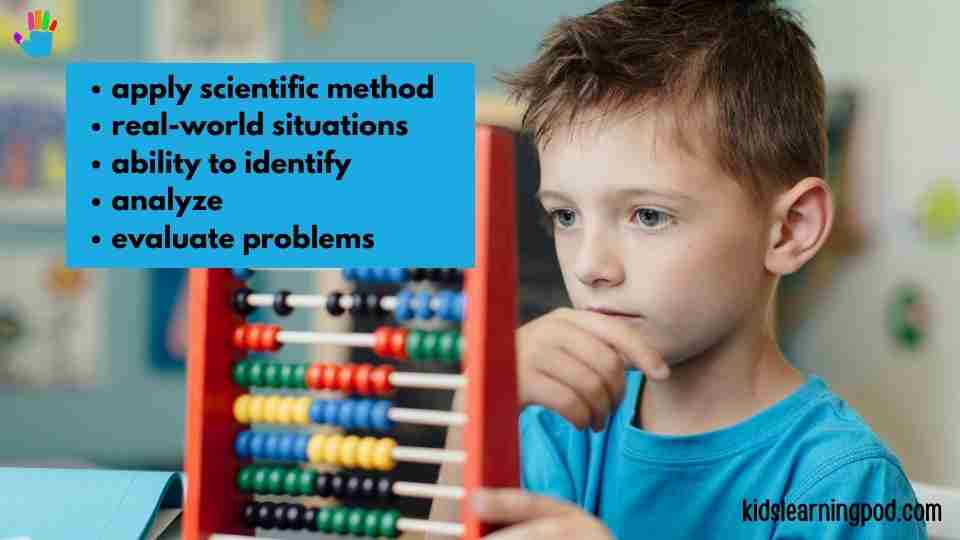
Enhances Creativity and Innovation
STEM education benefits and not only fosters critical thinking but also enhances creativity and innovation. Through STEM education, students learn to think creatively and apply their cognitive skills to solve problems in novel ways.
STEM education also emphasizes collaboration and teamwork, allowing learners to develop social skills such as communication skills, leadership, and empathy. Students are encouraged to share ideas and work together to solve complex challenges, enhancing their ability to generate new and innovative solutions.
Additionally, STEM education exposes students to cutting-edge technologies and ideas, inspiring them to think outside the box and pursue unconventional solutions. By promoting creativity and innovation, STEM education equips students with the skills and knowledge necessary to tackle the challenges of the future and drive progress in society
Improves Carrer Opportunities
STEM education teaches students the practical skills and theoretical knowledge required to pursue a range of STEM careers. Such students can explore career path in fields such as engineering, computer science, biotechnology, medicine, and more.
STEM careers are in high demand in today’s job market, and students with STEM education backgrounds have a competitive advantage in securing high-paying jobs with opportunities for growth and advancement.
STEM education equips students with the skills and knowledge necessary to excel in a variety of STEM careers, from technical expertise to critical thinking, communication, and solution to problems.
Moreover, STEM education promotes lifelong learning, enabling students to continuously adapt to the ever-evolving job market and pursue new opportunities in STEM fields. With the increasing demand for STEM professionals, STEM education opens up a world of possibilities for students looking to build a successful and rewarding career while looking for Benefits of stem education.
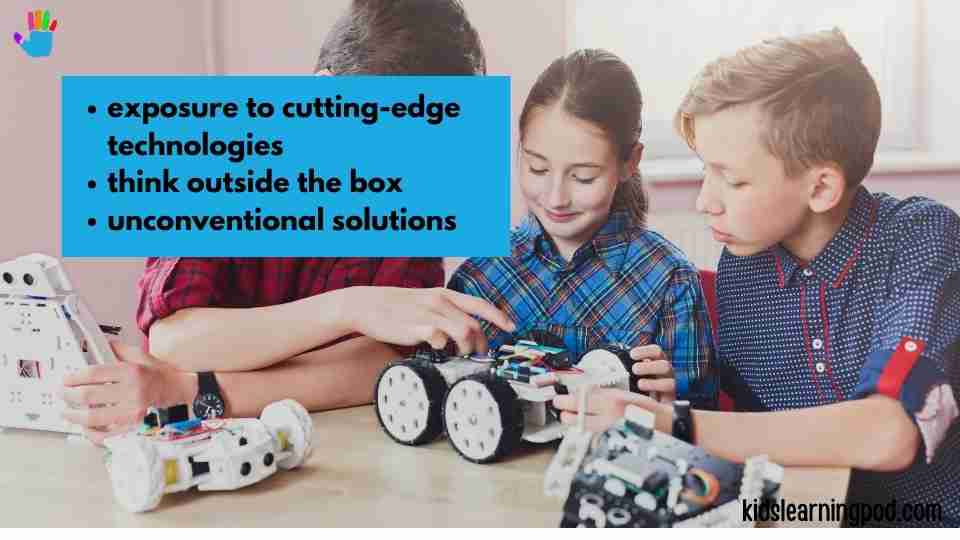
Addresses Real-World Problems
One of the great Benefits of stem education is that it encourages knowledge application to real-world problems, preparing students to address some of the most pressing challenges facing society.
By providing a hands-on, experiential learning environment, STEM education encourage students to apply their knowledge and skills to real-world applications, creating innovative solutions that have a tangible impact on society.
Medical research and healthcare one of the great Benefits of stem education
Medical research and healthcare are areas where STEM education has significant real-world applications. Advances in medical technology and treatments have improved patient outcomes and increased life expectancy, and STEM education has played a crucial role in these advancements.
STEM-educated individuals are involved in every aspect of medical research and healthcare, from developing new pharmaceuticals to designing medical devices to analyzing patient data. Furthermore, STEM education has facilitated the use of advanced technologies such as artificial intelligence, machine learning, and big data analytics in medical research and healthcare.
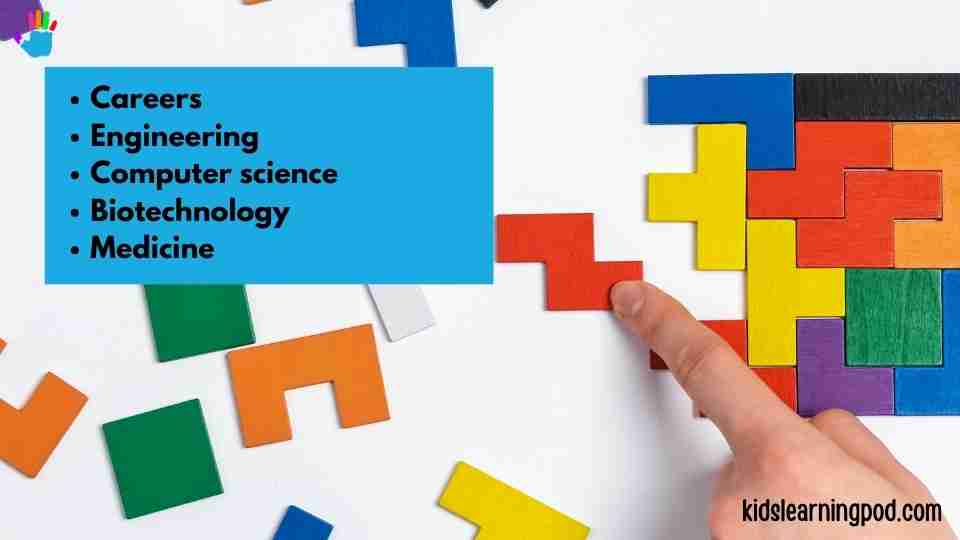
Environment Sustainability
STEM education plays a vital role in promoting environmental sustainability by teaching students about the importance of sustainable practices and introducing them to new technologies that can help reduce the impact of human activities on the environment.
Through active learning, kids learn about renewable energy sources, energy efficiency, waste reduction, and other sustainable practices that can help preserve natural resources and reduce carbon emissions.
Additionally, STEM education exposes students to emerging technologies such as green energy, smart grids, and carbon capture and storage, providing them with the tools and knowledge to pursue careers in environmental sustainability.
By emphasizing the importance of environmental sustainability and introducing students to new technologies, STEM education prepares the next generation to be responsible stewards of the planet, creating a more sustainable and livable world for future generations.
Technological Advancement
Technological advancement is a critical component of STEM education and for getting most out of Benefits of STEM Education. By integrating science, technology, engineering, and mathematics, STEM education empowers students with the skills and knowledge to problem solve and develop innovative solutions using technology.
STEM learning enables students to explore and apply technology in new ways, preparing them for future careers in technology-related fields. Through STEM education, students learn to develop and implement technologies, solve complex problems, and collaborate with others to achieve common goals.
Additionally, STEM education emphasizes the importance of adapting to new technologies and staying up-to-date with the latest advancements, enabling students to thrive in a rapidly changing technological landscape. By promoting technological advancement, STEM education helps to create a world that is more connected, efficient, and innovative, making it an essential component of modern education
Increased Scientific Literacy
STEM education increases scientific literacy by emphasizing the importance of science and encouraging students to explore scientific concepts and principles.
By providing a deeper understanding of scientific concepts, STEM education helps students understand complex scientific issues such as climate change, public health, and technology development.
By promoting scientific literacy, STEM education equips students with the knowledge and skills necessary to engage with science throughout their lives, making them informed citizens who can contribute to science-based discussions and decision-making.
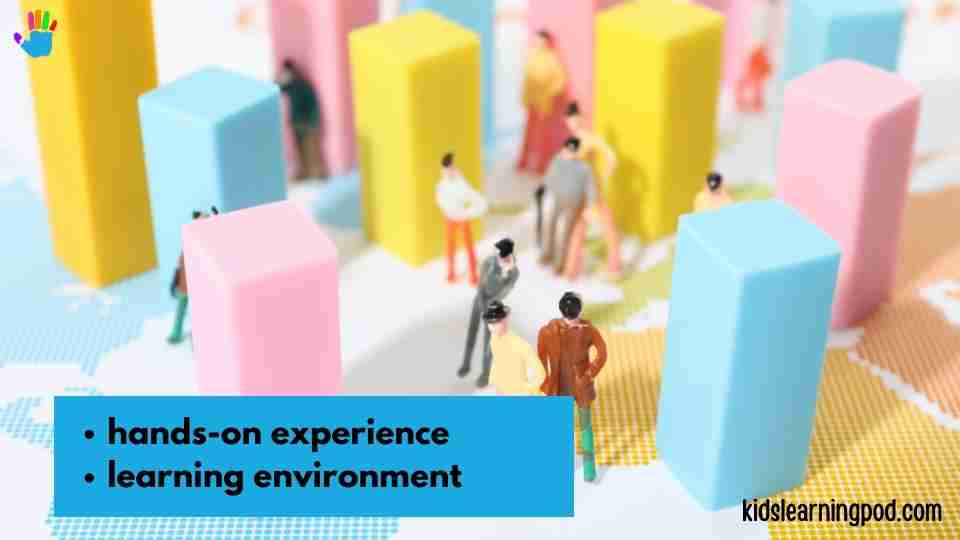
Helps Develop A Stronger Foundation In Math and Science
STEM education provides students with a strong foundation in math and science, which are essential for success in STEM-related fields among various titles of Benefits of STEM Education.
STEM students learn the fundamental concepts of math and science, such as algebra, geometry, calculus, and physics, and how they apply to real-world situations.

Encourages Teamwork
It encourages teamwork in a team-oriented environment. Encouraging students to work collaboratively helps them develop essential teamwork and communication skills that are highly valued in the workforce for reaping Benefits of STEM Education.
STEM learning involves group projects and problem-solving activities, where students must work together to develop solutions to complex problems. This encourages children to share their ideas, listen to others’ perspectives, and work together towards a common goal.
In a team-oriented environment, students can also learn from one another and develop new skills and perspectives. Overall, STEM encourages students to work collaboratively and develop the teamwork skills that are essential for success in any field.

STEM Subjects and STEM Courses
STEM subjects and courses encompass the fields of Science, Technology, Engineering, and Mathematics in Benefits of STEM Education. These subjects and courses offer a unique approach to learning that emphasizes critical thinking, problem-solving, and innovation. Implementing STEM learning in education is crucial as it provides students with the opportunity to explore and develop their creativity and practical skills through hands-on activities.
STEM programs offer a variety of opportunities for students to engage with STEM subjects, from STEM projects to competitions, to internships and research opportunities.
These programs help to foster interest and passion for STEM subjects, leading to a stronger foundation in these fields and an increased likelihood of pursuing a STEM-related career.
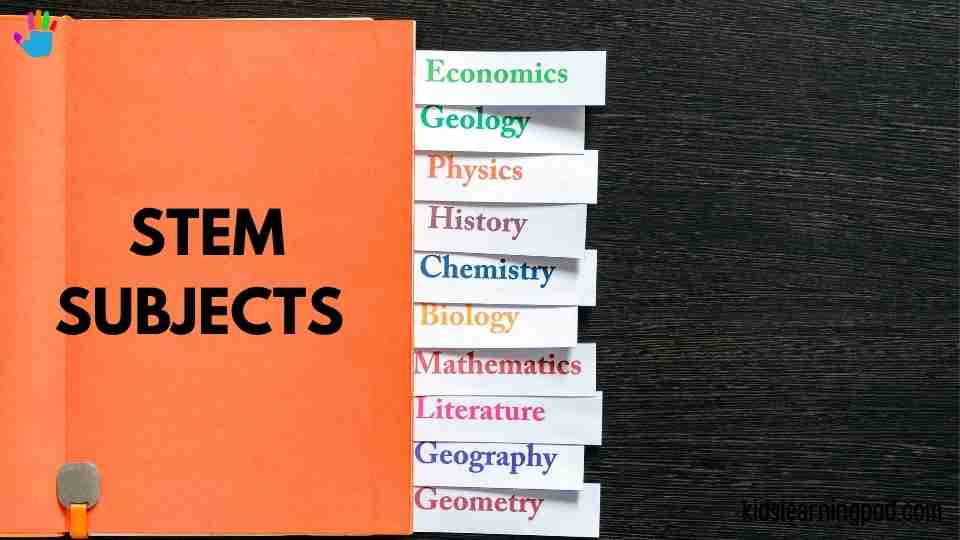
Students Learn to Worth with Technology
STEM students work with technology by providing them with the opportunity to engage in digital learning experiences. In STEM classes, students use digital tools such as computer software, coding programs, and other technology resources to develop and test solutions to real-world problems.
kids learn how to use technology as a tool for problem-solving, collaboration, and communication. These experiences also help kids to develop the skills necessary for success in the digital age, such as digital literacy and computational thinking.
It has many benefits. It helps kids to learn to work with technology, preparing them for the demands of the 21st century workforce and the increasing prevalence of digital tools in all aspects of life.
STEM Teaches Kids to Persevere
STEM teaches kids to persevere through challenging tasks and projects. In STEM classes, students often encounter difficult problems that require them to think creatively and critically in order to find a solution.
This can be frustrating and challenging, but it also teaches students the value of persistence and determination. By persevering through these challenges, students develop important life skills such as problem-solving, resilience, and perseverance. They also learn to overcome obstacles, think outside the box, and take risks in order.
Proactive Learning
At its core, STEM education champions proactive learning. It’s not just about memorizing facts; it’s about actively engaging with the material, encouraging curiosity, exploration, and a deeper understanding of concepts. Proactive learning, a cornerstone of STEM education, revolutionizes the traditional model of passive absorption of information. Instead of merely memorizing facts and figures, STEM encourages an active, hands-on approach that sparks curiosity and encourages exploration.
In STEM classrooms, learners aren’t passive recipients of information; they’re engaged participants. They’re encouraged to ask questions, seek answers, and discover the ‘why’ behind the ‘what’. This methodology is driven by curiosity, pushing students to explore and experiment, fostering a deeper understanding of the underlying principles. The beauty of proactive learning in STEM lies in its capacity to bridge theory and practice. It’s not just about understanding scientific principles from a textbook; it’s about seeing them in action, conducting experiments, and experiencing the cause-and-effect relationships firsthand. This direct engagement solidifies knowledge, making it more tangible and enduring.
STEM’s proactive learning methodology provides best Benefits of STEM Education also cultivates problem-solving skills. Instead of presenting ready-made solutions, students are encouraged to grapple with real-world problems, enabling them to apply their knowledge creatively. This approach not only enhances their understanding of concepts but also prepares them to tackle challenges they’ll encounter beyond the classroom. Moreover, by fostering a culture of inquiry and exploration, STEM education instills a lifelong love for learning. It encourages a mindset that values curiosity, adaptability, and a continuous quest for knowledge to find Benefits of STEM Education.
Problem-Solving Mastery
Problem-solving lies at the heart of STEM education among Benefits of STEM Education. It’s not solely about arriving at solutions; it’s about honing a mindset that fearlessly confronts challenges and innovates through critical thinking and analytical prowess. STEM cultivates problem-solving through a multifaceted approach. It encourages students to break down complex problems into smaller, more manageable components, allowing them to approach each part systematically. This deconstruction of problems develops a structured thinking process, enhancing analytical skills and logical reasoning.
Moreover, STEM education doesn’t shy away from failure. Instead, it embraces it as a crucial part of the learning process. Encountering and overcoming failure teaches resilience and perseverance, fostering a mindset that welcomes setbacks as opportunities for growth and learning. STEM’s emphasis on hands-on learning further enhances problem-solving abilities. Engaging in real-world experiments and projects allows students to apply theoretical knowledge to practical situations, enabling them to devise creative solutions. This application of learning in tangible scenarios sharpens their ability to think innovatively and adapt their knowledge to diverse challenges.
One of the most profound impacts of problem-solving within STEM is the development of a growth mindset. Students are encouraged to view challenges not as insurmountable obstacles but as opportunities to learn and improve. This mindset instills a sense of confidence in their ability to tackle unfamiliar problems, preparing them for the uncertainties of future careers and life challenges. STEM’s dedication to problem-solving mastery goes beyond the classroom, fostering a skill set that is not confined to a specific subject but can be applied to various aspects of life. This approach not only equips students with knowledge but also empowers them with the mental tools necessary to navigate an ever-evolving world.
Concept Retention
STEM education’s unique approach to learning significantly enhances concept retention by integrating Science, Technology, Engineering, and Mathematics in a practical and hands-on manner for Benefits of STEM Education. This dynamic method of instruction plays a vital role in solidifying complex concepts in students’ minds. The interdisciplinary nature of STEM learning promotes a holistic understanding of concepts. Rather than isolating subjects, it interweaves them, showcasing their interconnectedness. This approach helps students see how different subjects complement and build upon each other, fostering a more comprehensive grasp of complex ideas.
The hands-on aspect of STEM education is a game-changer in concept retention. By engaging students in practical applications, experiments, and projects, it moves beyond rote memorization to active participation. When students physically interact with concepts, they form a deeper understanding of the underlying principles. This tactile learning experience cements knowledge in their minds, making it more memorable and easier to recall.
Moreover, STEM’s practical approach allows students to see the real-world applications of what they’re learning. Understanding how theoretical knowledge translates into practical solutions not only reinforces the concepts but also motivates students by showing the relevance and impact of what they’re studying.
Integration of ICT Learning
STEM’s integration of Information and Communication Technology (ICT) goes beyond utilizing gadgets and software among various Benefits of STEM Education. It delves into comprehending the depth and breadth of technology’s role across different disciplines, emphasizing its applications and implications in diverse fields. STEM leverages ICT as a tool for learning, problem-solving, and innovation. It provides students with the skills and knowledge to harness technology effectively, be it coding, data analysis, or utilizing specialized software. This hands-on engagement with technology not only makes learning more dynamic but also prepares students for the digital landscape they’ll encounter in their future careers.
Moreover, STEM underscores the importance of understanding the impact of technology in various fields. It’s not just about using tools; it’s about recognizing how technology transforms industries, shapes economies, and influences society. Students are encouraged to explore the ethical, social, and economic implications of technology, fostering a holistic understanding of its effects.
STEM’s integration of ICT learning is not confined to a specific subject but is interwoven throughout the curriculum, enhancing interdisciplinary connections. Whether it’s applying mathematical concepts in programming or utilizing technology in engineering projects to use Benefits of STEM Education, this integration underscores the interconnectedness of STEM fields and the role of technology as an enabler in each.
Teamwork Dynamics
Collaboration is more than just a valuable skill—it’s a fundamental pillar from Benefits of STEM Education. The emphasis on teamwork nurtures essential social skills and fosters the ability to work effectively towards a shared objective.
STEM recognizes that real-world challenges often necessitate diverse perspectives and complementary skill sets. Encouraging teamwork in the classroom replicates these scenarios, preparing students for the collaborative nature of many STEM fields. Through group projects, problem-solving activities, and team-based challenges, students learn how to leverage each other’s strengths and compensate for weaknesses, mirroring the dynamic teamwork required in professional settings.
The collaborative nature of STEM education not only cultivates the ability to work with others but also hones essential communication skills. Students learn to articulate their ideas clearly, actively listen to others, and engage in constructive dialogue. They navigate conflicts, compromise, and ultimately learn the art of collective decision-making. Moreover, teamwork in STEM goes beyond just completing tasks; it teaches students the value of synergy and shared responsibility. They understand that their success is intertwined with the success of their team, fostering a sense of accountability and mutual support.
By promoting teamwork dynamics to use Benefits of STEM Education proeprly, STEM education not only equips students with technical know-how but also with the soft skills crucial for success in any professional field. It prepares them to navigate complex work environments, fostering adaptable, collaborative, and communicative individuals ready to contribute meaningfully in a team setting.
STEM – What is it and why is it important?
Download One Day STEMothon Challenges Free

Kindly Allow Pop ups to let the Download Begin!
FAQs about STEM Education in Early Childhood
1. What are the benefits of STEM education?
STEM education offers numerous benefits, including fostering critical thinking, problem-solving skills, and creativity. It also prepares students for future careers in science, technology, engineering, and mathematics.
2. What are the advantages and disadvantages of STEM education?
Advantages of STEM education include improved academic performance and increased career opportunities. Disadvantages may include a potential lack of focus on other subjects and a need for specialized resources.
3. Who benefits from STEM education?
STEM education benefits a wide range of individuals, including students who gain essential skills, educators who promote innovation, and society as a whole through technological advancements.
4. What is unique about STEM education?
STEM education is unique because it integrates science, technology, engineering, and mathematics, emphasizing real-world applications and hands-on learning to prepare students for the challenges of the modern world.
5. What are the 10 benefits of STEM education?
The 10 benefits of STEM education include improved problem-solving skills, increased innovation, enhanced job opportunities, better preparation for the future, and a deeper understanding of the world around us, among others.
6. What are the disadvantages of STEM education?
Disadvantages of STEM education may include a potential narrowing of focus, limited resources, and the possibility of neglecting other essential subjects. But it definitely outweighs Benefits of STEM Education.
7. Why is STEM education important?
STEM education is vital because it equips students with the skills needed for success in a technology-driven world, encourages innovation, and addresses global challenges through scientific and technological advancements.
8. What are the benefits of STEM education in early childhood?
STEM education in early childhood helps young children develop critical thinking skills, curiosity, and a strong foundation in STEM subjects, setting the stage for future academic and career success.
9. What are 5 reasons why STEM education is important?
Five reasons why STEM education is crucial include fostering problem-solving skills, promoting innovation, preparing for future job opportunities, addressing societal challenges, and enhancing global competitiveness.
10. What is STEM education, and why is it important?
STEM education is an interdisciplinary approach that integrates science, technology, engineering, and mathematics to prepare individuals for the challenges of the modern world. It is important because it equips learners with essential skills and knowledge for future success.
11. What are the advantages and disadvantages of STEM education?
Advantages of STEM education include improved critical thinking, career opportunities, and innovation. Disadvantages may involve resource limitations and potential neglect of other subjects.
Conclusion
In simple terms, STEM education in early childhood is like giving kids superpowers. It helps them think, solve problems, and understand the world better. It’s like a magic key that opens doors to cool jobs and makes the world better. But, like all things, it has its ups and downs. It’s super cool for learning, but we shouldn’t forget other important stuff. Overall, STEM is important because it helps kids be smart and ready for the future!





